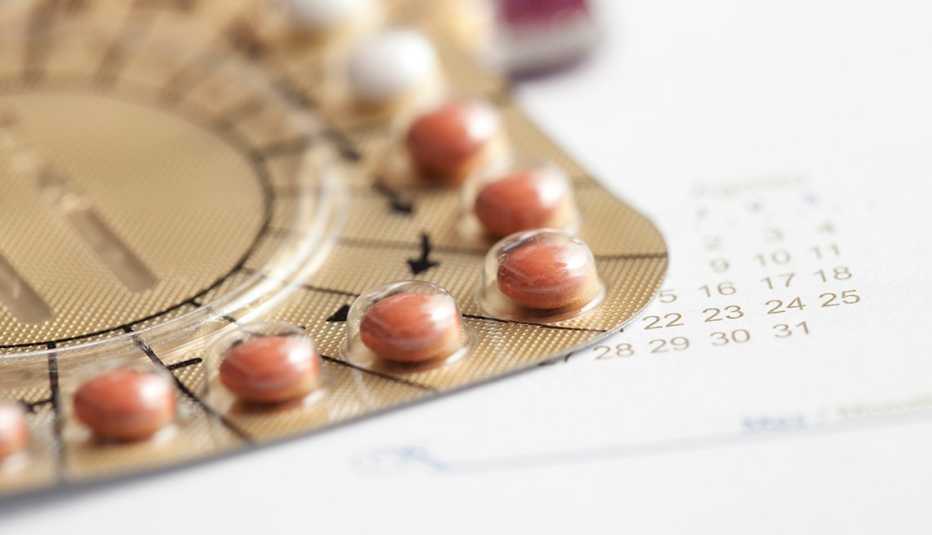AARP Hearing Center




First defined only in 1821 by a French physician, menopause had historically been treated with everything from opium to acupuncture. Then, in 1942, Wyeth Pharmaceuticals introduced an estrogen pill called Premarin, whose name was derived from its primary ingredient: pregnant-mare urine.
Premarin sales soared until the 1970s, when it was linked to an increased risk of endometrial cancer. When, however, it was combined with a second hormone, progestin, estrogen treatment was deemed to be safe and effective. Backed by a 1984 National Institutes of Health assertion that estrogen was the most effective means to prevent bone loss, the hormone again became the drug of choice to help ease hot flashes, night sweats and a host of other menopausal symptoms.
By the 1990s the American Heart Association, the American College of Physicians, and the American College of Obstetricians and Gynecologists all agreed that estrogen was an effective shield against both osteoporosis and heart disease in older women. In 1992, Premarin became the best-selling drug in the country, and it maintained its popularity through the end of the century, with about a third of those prescriptions written for women who were well past menopause.
As estrogen therapy grew in popularity, further studies seemed to confirm its safety and efficacy, and HRT reigned as the gold standard for menopause management — until July 2002. That’s when a bombshell hit the medical establishment. Initial results from the Women’s Health Initiative (WHI) — a study of some 17,000 postmenopausal women between ages 50 and 79 — revealed that a certain combination and dosage of estrogen and progestin was riskier to women’s health than anyone had understood. On this particular regimen, significantly more women were dying of heart attack, stroke, blood clots, and breast and ovarian cancer. This was a complete turnaround from what doctors had believed for more than a half-century.
Suddenly, “women were scared and confused,” says JoAnn Manson, chief of the Division of Preventive Medicine at Brigham and Women's Hospital in Boston. In addition to her thriving practice in internal medicine, Manson was a WHI investigator and was as surprised as everyone else by the study’s results. “Like every other clinician in this country, I was inundated with calls and visits from patients.” Almost overnight, some 80 percent of American women who had been using hormones stopped cold turkey. Sales of Prempro, the estrogen-and-progestin combination used in the trial, plummeted. Once touted as a treatment that helped maintain or restore youthful exuberance to a woman’s body, mind and sex drive, HRT was now considered deadly.
But according to Manson, a few years after the initial WHI results were announced, investigators began to realize that those early interpretations had been wrong, at least partially. Yes, women 60 and older who started hormones more than a decade into their menopause had a higher incidence of death and disease. That’s in part because many women who are over 60 already suffer from the very conditions that HRT might preempt. But this is not necessarily true for women under 60 or for women who entered menopause less than 10 years before beginning treatment.
In fact, an 18-year follow-up look at the WHI study, published last year in JAMA, reported that women ages 50 to 59 who took HRT had a lower mortality rate than was found among those in the control group, who were not taking hormones. Across the board, the HRT participants in their 50s were less likely to die of heart disease, cancer or any other cause than were those in the no-HRT control group.
Over the past several years, a series of studies have also revealed that abruptly halting HRT, especially for younger users, can be harmful to women’s health. Researchers from the University of Southern California looked at women 60 and older who had been prescribed HRT prior to the release of the WHI study. They found that those who stopped taking HRT after the study came out had a 55 percent higher risk of hip fracture than those who continued treatment. Another study, from Yale, extrapolates that more than 91,000 women ages 50 to 59 who had hysterectomies and were not prescribed estrogen died prematurely from cardiovascular disease between 2002 and 2012.


































































More From AARP